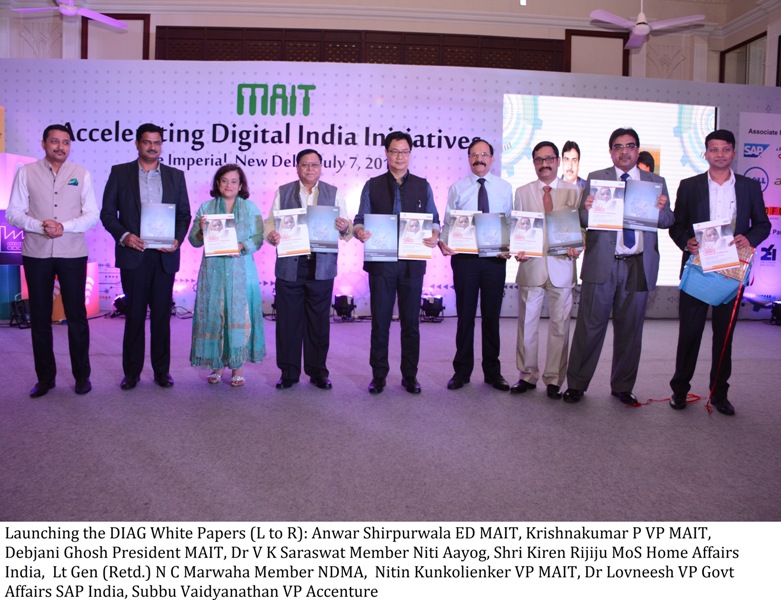2 mins read
MAIT announced the unveiling of two topical white papers

December 23, 2024
Copyright 2023, IT Voice Media Pvt. Ltd.
All Rights Reserved

 The Digital India Action Group (DIAG), a think tank established for ideating and monitoring policy initiatives to support the Indian Government’s mission of Digital India, set up by Manufacturers’ Association of Information Technology (MAIT) announced the unveiling of two topical white papers – “IoT for Effective Disaster Management” and “Aadhaar Enablement: A Framework for Citizen-Centric Services”. The first white paper aims to create awareness and appreciation about the potential use and applications of IoT for different aspects of disaster management. The second white paper outlines how deploying an Aadhaar authentication framework, using a facility like e-Sign, governments can move towards a phased improvement in administrative processes, residents’ experience of public service delivery and achievement of larger human development objectives.
The Digital India Action Group (DIAG), a think tank established for ideating and monitoring policy initiatives to support the Indian Government’s mission of Digital India, set up by Manufacturers’ Association of Information Technology (MAIT) announced the unveiling of two topical white papers – “IoT for Effective Disaster Management” and “Aadhaar Enablement: A Framework for Citizen-Centric Services”. The first white paper aims to create awareness and appreciation about the potential use and applications of IoT for different aspects of disaster management. The second white paper outlines how deploying an Aadhaar authentication framework, using a facility like e-Sign, governments can move towards a phased improvement in administrative processes, residents’ experience of public service delivery and achievement of larger human development objectives.